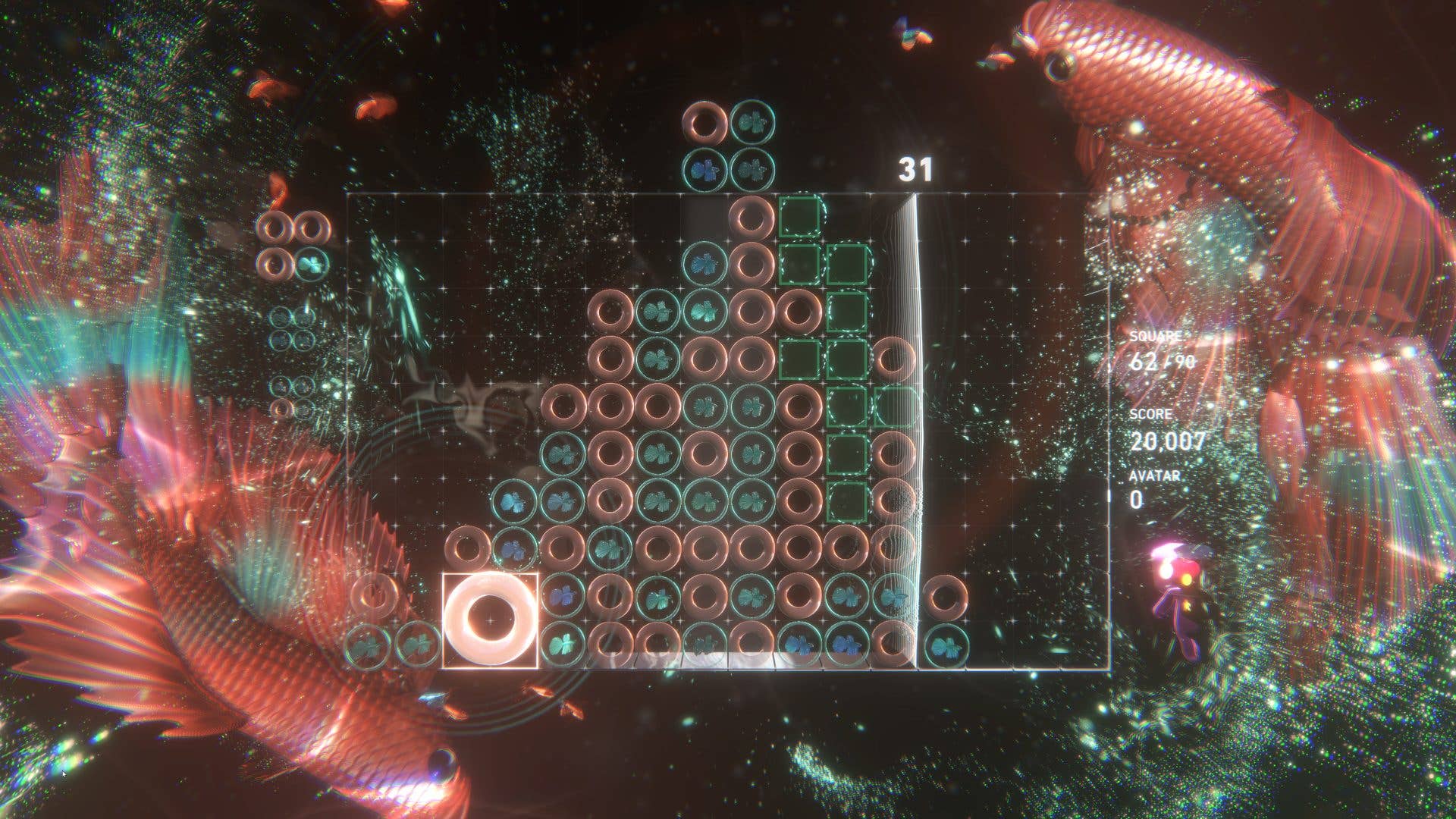In our house, the first level of the new Lumines Arise demo already has a name. The demo hasn’t been with us long – and it’s available for PS5 and Steam until 11.59pm local time on the 3rd of September, so get on it – but it’s made an impact. That first level has made an impact. I call it Cadbury Physics.
Super quick: Lumines is a puzzle game about sorting blocks into groups of two colours. The blocks drop into the horizontal playing area wonderfully jumbled, and you rotate them, match the colours, and ideally use them to build squares of 2×2 blocks of the same colour. You then grow these squares by adding more blocks of the same colour until the timeline sweeps through and cancels them out. Points for you! And more space to play with! And onwards and upwards. Beautiful.
To see this content please enable targeting cookies.
But the colours, and the theme and music surrounding them, change with each level. And in the first level of the Lumines Arise demo? Well. Hard to say, really. You’re either deep in space or diving down into the secrets of the quantum universe. One of the colours you’re matching is less a colour and more a little galaxy captured in an oily bubble. Form 2×2 squares and it sort of blobs outwards into a bigger bubble. It’s less bottle galaxy and more puddle galaxy, and it clashes gorgeously with the other strain of blocks in this level, which are jagged little gold leaf diamonds.
Far-flung space? Deep within an atom? Whatever’s the truth, it all looks strangely delicious. Houston? We have a tasty problem. It’s like a chocolate advert out there. I can just imagine ripping the foil off those diamonds to reveal the chocolate melting within, and then dipping them in the syruppy quantum goo from those puddle galaxies. It would be irradiating, sure, but it would be such a sweet way to go. The whole level feels like a black forest gateaux baked by Nasa’s Jet Propulsion Laboratory.
The thing about Lumines is that you can talk about it forever just by talking about the small things, and Arise is no different. Small things: the way the camera now zooms in slightly when you’ve started a square going, as if the universe notices your work and is leaning in, eager to see how it turns out. Small things: the way the “Bonus” text on the first level turns to a coffee swirl of vapour as it melts away. Small things: the way the chalk circles in the second level – this level has yet to have a name in our house – sometimes jangle into scribbly squares when the music dictates that they must.
And yet there are big things to talk about, too. Lumines Arise is basically Lumines getting the Tetris Effect treatment. The sound and fury has been dialled up. The graphical approach is glossy and melting one minute, and geckos dancing while campfires flicker in the darkness the next. But just as Tetris Effect introduced Zone play, which allowed you to break the game by entering a bizarre state of being in which you could grow a Tetris stack until it was six, eight, ten rows deep, Lumines Arise gets Burst mode.
Oh Burst mode! Tantalising and terrifying. It’s a game-changer. It’s a game disruptor. And yet, like Zone, it feels so simple.
Burst mode is built up through regular play. As you clear squares, your Burst percentage meter at the top of the timeline ticks upwards. When it reaches 100, you squeeze both triggers and time coughs and turns inwards on itself. Suddenly, you can grow a single colour of squares without the timelines clearing them as they sweep past. (A number above the timeline tells you how many sweeps you have left.)
But there’s more. As you grow your single colour square, blocks of the opposing colour will regularly shoot into the air as you play, and will hang, suspended above the playing field until Burst mode is over. Eventually, you’ll have grown your square as much as you can, and you’ll have run out of timeline sweeps – Lumines is a really weird game to talk about, isn’t it? – and then you get a double-whammy of scoring. The square you grew finally disappears, showering you in points, and then all those other-coloured blocks that had been suspended overhead suddenly fall back into play, and will probably lead to a decent amount of squares themselves.

Here’s the thing about Burst mode. It’s wonderful, but it’s also terrifying. Sure, you can use it to get out of trouble. You can actually trigger it once the meter’s above 50 percent for this purpose, it just won’t last as long. But to get the most out of it, you have to understand that while the whole thing looks chaotic, it requires absolute precision if you’re to do it justice. Sure, it looks like the universe is erupting around you and that time itself is stuttering, but you need to have a plan for all those incoming blocks. You need to know when to rotate right and when to rotate left and when to drive them all home and grow that square.
I hope it goes without saying, but I absolutely love this. With the chain block, Lumines has always been the most geologically minded of puzzle games – a game that’s all about drilling down into the earth, laying seams of dynamite and then touching them off. But now there’s this anti-gravity component where detritus is sorted and flung into the aire and just waits there while you create the perfect environment for it to return to. I’m still getting my head around it. I’m still trying to bring Burst mode into focus with the way I lay out the grid to get the most from that chain block. I’m still trying to rumble the secrets of this strange physical universe, one delicious puddle galaxy at a time.





